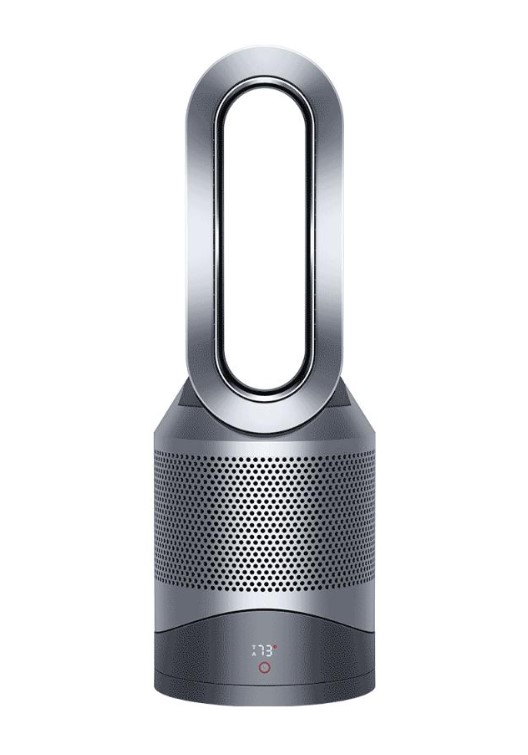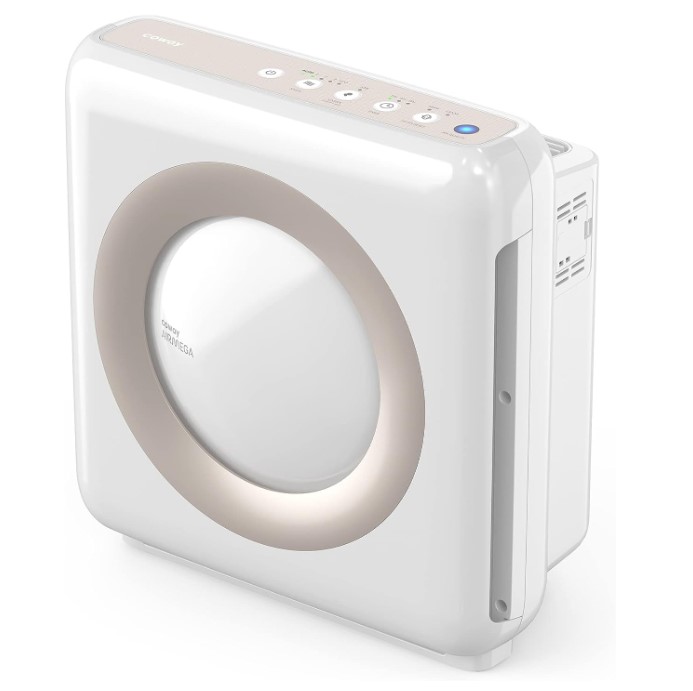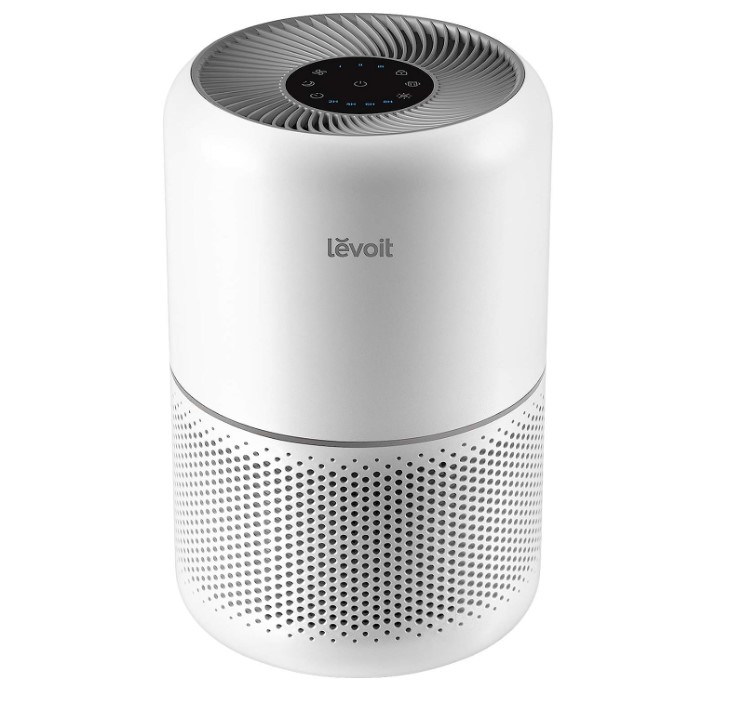Air Purifiers Explained: How Do Air Purifiers Work?
With indoor air quality gaining more attention, air purifiers have become key to creating healthier living environments. The concept of “air purifiers” encompasses a range of advanced technologies and systems designed to cleanse and refresh the air we breathe within our homes and workplaces. Numerous air purifier variations can be found in the market, each presenting distinct attributes and advantages.
Let’s delve into how air purifiers work to uncover the technologies behind these features and how they contribute to a better quality of life. Understanding these mechanisms will enable us to make better choices to enhance our well-being and enjoy cleaner indoor air.
How Do Air Purifiers Work?
Although each model may boast unique features in portable air purifiers, they share a common principle of operation. Employing advanced fan technology, these cutting-edge devices efficiently draw ambient air through multiple filters, trapping various contaminants. Utilizing state-of-the-art filtration mechanisms, these ingenious machines purify the air from dust, pollen, pet dander, mold spores, and harmful microorganisms, ensuring a healthier living space. The re-circulation process propels the purified air back into the room, rejuvenating the atmosphere with cleanliness and freshness.
Versatility is a hallmark of these modern marvels, as their varying sizes and weights render them conveniently portable. Seamlessly transitioning from one room to another, they cater to your dynamic lifestyle. For ultimate flexibility, some models can even be wall-mounted. In contrast, others are crafted in wearable and desktop versions, allowing you to choose the most suitable option for your specific needs.

By embracing portable air purifiers, you harness the power of cutting-edge technology to elevate the air quality of any space, making it a safer and healthier environment for you and your loved ones. Experience the convenience and effectiveness of these versatile devices as they harmoniously blend into your daily routine, ensuring fresh and rejuvenated air wherever you go. Step into a world of innovation and wellness with portable air purifiers – a testament to the boundless possibilities of modern technology.
Multifaceted Benefits of Air Purifiers

Air purifiers come with advanced technologies to improve the quality of the air we breathe, offering various benefits that span beyond the surface. Here are some of the most common advantages of air purifiers.
Neutralizes unpleasant odors
Air purifiers can eliminate many household odors, purifying the air and bringing back a clean environment. With the assistance of air purifiers, eliminating the scents of tobacco, cooked meals, or paint becomes a simple task.
Reduces allergens
Besides chemicals, indoor air often contains many allergeallergens, s dust, pollen, and pet hair. You can minimize the symptoms and avoid getting sick by eliminating them from your surroundings. For people with allergies, the advantages of air purifiers are undoubtedly valuable.
Eliminates chemicals from the air
Even when your windows and doors are closed, indoor air may contain many external pollutants such as carbon monoxide or nitrogen dioxide. Furthermore, it might be infused with chemical residues from cleaning products, including chlorine, benzene, ammonia, etc. An air purifier offers a significant advantage by effectively filtering out these chemicals, replenishing your home with clean and fresh air.
Prevents airborne diseases
Most common diseases such as the cold and flu, are transmitted via airborne pathogens, though they are not the only ones. It is also possible for viruses and bacteria to travel that way. Frequently, when one of your family members gets ill, others tend to follow shortly after. Therefore, it is best to use a purifier that captures pathogens and stops them from spreading to other family members.
Improves your sleep
The air quality we breathe directly impacts our well-being, including the quality of our sleep. Air purifiers create an environment conducive to restful sleep by ensuring that the air is free from allergens and pollutants that might disrupt sleep patterns. This results in more restorative sleep, leaving you feeling rejuvenated and ready to face the day ahead.
Air Purifier Filter Types and Technologies

True HEPA
HEPA stands for “High-Efficiency Particulate Air” or “High-Efficiency Particulate Arrestance”. A true HEPA filter meets HEPA manufacturing, testing, certification, and labeling standards. It must undergo rigorous testing and certification to verify its ability to eliminate no less than 99.97% of particles measuring 0.3 microns in diameter from the air that flows through it. These HEPA filters excel at removing various impurities, including dust, pollen, mold spores, mites, pet dander, cigarette smoke, and even particles as small as bacteria and certain viruses.
HEPA-type and HEPA-like
HEPA-type and HEPA-like filters can generally remove around 99% of particles ranging from 0.3 to 3 microns in size. This level of filtration proves effective for most particle-related cleaning needs within your household. These filters effectively capture particles such as dust mite debris, pollen, mold spores, pet dander, odors, smoke, and certain chemicals.
Activated carbon
Activated carbon, also known as activated charcoal or AC filter, is a form of carbon that undergoes processing to create tiny pores with a low volume. This structural modification significantly enhances the surface area, enabling more significant adsorption and chemical reactions. Its remarkable microporosity means that even one gram of activated carbon boasts a surface area exceeding 500 m2.
Activated carbon can attract, adsorb, and neutralize small particles such as odors, organic gases, and certain chemical compounds thanks to its porous nature. These particles are often too small to be captured by other filter types. If you seek to eliminate airborne odors, gases, or other chemicals from your living space, having an air purifier with an activated carbon filter is an exceedingly effective strategy.
UV light

UV light treatment uses short-wavelength ultraviolet (UV-C) light as a disinfection technique to eradicate or inactivate microorganisms. This is achieved by destroying nucleic acids and disrupting their DNA structures, making them incapable of performing cellular functions.
UV light can be used for several purposes, such as food, water, and air purification, offering its antiviral. antibacterial, sterilization, and deodorization capabilities against microorganisms. It is important to note that UV bulbs will naturally degrade with time and should be replaced at least once every 12 months to ensure optimal functionality.
Electrostatic
An electrostatic filter, or precipitator, induces an electrostatic charge to the airflow. The basic filter comprises wires arranged vertically, followed by evenly spaced metal plates. By applying a voltage between these plates and wires, particles receive a charge and attract to the plates. This electrostatic technique can enhance the efficiency of HEPA and HEPA-type filters, making it proficient in capturing airborne particles such as pollen, smoke, dust mite feces, and mildew.
Ionizer and Ion generators
During ionization, electrons are gained or lost by an atom or molecule to form ions. An air ionizer operates by utilizing electrical voltage to ionize air molecules. Airborne particles become positively charged and are drawn towards negatively charged ions like static from your television attracts dust. Subsequently, these negative ions attach to these particles, causing them to form larger entities that can be easily captured by an air purifier filter, or attach to surrounding surfaces.
Moreover, the ionization process has a disinfection property on viruses and bacteria. In this way, bacteria and viruses trapped within the filter medium are prevented from reproducing in that environment. Combining an ionizer and a filter can improve the filter’s effectiveness. Notably, ionizers can positively affect particles such as pollen, dust, pet hair, and tobacco smoke.
Photocatalytic oxidation

UV light is commonly combined with titanium dioxide, which acts as a photocatalyst when exposed to UV light. Studies have shown that titanium dioxide functions as a photocatalyst not only under UV light but also under visible light. Its potent oxidative capabilities turn water into hydroxyl radicals, damaging many macromolecules such as nucleic acids, carbohydrates, lipids, and amino acids. As a result, titanium dioxide can be used with UV light to deodorize, sterilize, and prevent fouling.
In contrast to basic UV light, which affects only directly exposed surfaces, hydroxyl radicals can pervade an entire room, exerting a more extensive effect. These hydroxyl radicals have antiviral, antibacterial, sterilizing, and deodorizing properties against both pathogenic and non-pathogenic microorganisms. Hence, the hydroxyl radicals ensure clean and healthy air by eliminating allergens, dust mites, bacteria, fungi, molds, and harmful volatile organic compounds (VOCs).
Incinerator
The incinerator pulls in particles that are subsequently incinerated on a ceramic core. Afterward, the sterilized air is cooled before being pushed back into the environment. The level of microorganisms and allergens will be reduced by 85% within fourteen to twenty-one days and will be maintained at a minimum level.
The technology achieves this by eliminating microorganisms and allergens within a fraction of a second. The process operates silently and demands no maintenance or occasional part replacements. On average, these devices process between 14,000 to 20,000 liters of air per hour, efficiently treating the entire room’s air briefly.
Things to Consider When Choosing an Air Purifier For Your Living Space

To fully understand the world of air purifiers, it is vital to acquaint yourself with some key factors. The following tips will help you decide when choosing an air purifier.
The air is lazy
It is crucial to keep in mind that air behaves differently than water. While water seeks the lowest point to achieve a level surface, air doesn’t follow the same pattern. Accordingly, if you place an air purifier in one room, the air quality in a neighboring room might not be affected much. This is why portable air purifiers are designed to be room specific.
Noise level
Below is a compilation of typical sounds ranging from 10 to 70 dB. While an air purifier of 45 dB might seem quiet in a crowded room, it can be quite noisy when placed in a bedroom as you attempt to rest.

Typical room size and Air change per hour

Changing the room’s air at least three times per hour is recommended. This frequency ensures effective purification and aligns with the airflow in and out of the room. A larger ventilation system might be necessary if the room has significant foot traffic or if its doors and windows are frequently opened and closed.
Operational costs
An air purifier incurs two primary operational costs: electricity consumption and filter replacements. The electricity cost will depend on the motor’s size and speed and how long it runs. On the other hand, the cost associated with filter replacements is influenced by the quantity of pollutants in the air and the price of the filters.
Things to filter out
You may want to eliminate some airborne pollutants from your living space.
- Odors include cooking, smoke, pet, and organic odors from decaying substances and sewage.
- Tiny particles such as dust, dust mite feces, pollen, shed skin, tiny material fibers, smoke particles, and mold spores.
- Volatile organic compounds (VOCs) serve as paints and cleaning items solvents.
- Organic substances such as herbicides, pesticides, and certain solvents.
- Filters can capture Microscopic bacteria and viruses or eradicate them through specific filtration methods.
Top-Rated Air Purifiers in the Market
Now that we have a solid understanding of air purifiers, let’s move on to some of the best models in the market. This list of 5 top-rated air purifiers will help you make a good choice and improve indoor air quality.
Blueair Blue 311i+ Max

The Blueair Blue 311i+ Max is a top-tier air purifier, offering exceptional performance and cutting-edge technology. Designed to focus on efficiency and effectiveness, this purifier employs a combination of mechanical and electrostatic filtration to capture even the tiniest particles, including allergens, dust, and pollutants. Its high Clean Air Delivery Rate (CADR) ensures rapid and thorough air purification, making it suitable for medium- to large-sized rooms. The Blue 311i+ Max also features smart connectivity, allowing users to remotely monitor and control air quality through a smartphone app. Its sleek design and quiet operation make it a seamless addition to any living space.
Dyson Pure Hot+CoolTM HP01 Air Purifier

The Dyson Pure Hot+Cool™ HP01 Air Purifier offers a unique blend of air purification, heating, and cooling capabilities. Its advanced 360° filtration system merges a specialized filter to capture odors and gases with a HEPA filter that effectively entraps 99.97% of particles as small as 0.3 microns. HP01 can be used as both a heater and a cooler, allowing you to enjoy a comfortable living environment all year. The unit also has automatic filter-life notifications, simplifying maintenance and guaranteeing optimal efficiency.
Coway Airmega AP-1512HH

Renowned for its compact size and powerful performance, the Coway Airmega AP-1512HH is a top contender among air purifiers. Despite its small footprint, this unit boasts a robust four-stage filtration system, including a true HEPA filter and an eco mode for energy efficiency. The AP-1512HH is suitable for rooms of various sizes and effectively tackles allergens, odors, and pollutants. Its user-friendly interface and intuitive controls provide hassle-free operation and customizable settings. Its modern design, reliable performance, and low noise levels make the Coway Airmega AP-1512HH a standout choice for improving your indoor space.
LEVOIT Core 300 Air Purifier

The LEVOIT Core 300 HEPA Filter Air Purifier is a budget-friendly option that doesn’t compromise on quality. Engineered with a three-stage filtration process, including a true HEPA filter, it effectively captures 0.3-micron particles. Ideal for small to medium-sized rooms, the Core 300 is lauded for its quiet operation and sleek, minimalistic design. Its straightforward controls and filter replacement indicator ensure ease of use and maintenance.
Winix 5500-2 Air Purifier

The Winix 5500-2 Air Purifier provides comprehensive air cleaning with its advanced features. Armed with a true HEPA filter, a washable AOC (Advanced Odor Control) carbon filter, and PlasmaWave technology, it effectively captures allergens, smoke, odors, and chemical vapors. The device offers a range of fan speeds and an auto mode that adjusts settings based on real-time air quality. With its intuitive control panel, remote control, and filter replacement indicator, the Winix 5500-2 ensures effortless operation and maintenance.
Bottom Line
Through this comprehensive exploration of air purifiers explained, we have unraveled the diverse technologies that power these devices, ranging from HEPA filters and UV light to activated carbon, and the science behind their proficiency in removing pollutants and allergens. With this knowledge, you can now make informed decisions when selecting the ideal air purifier for your living space.
Related Articles